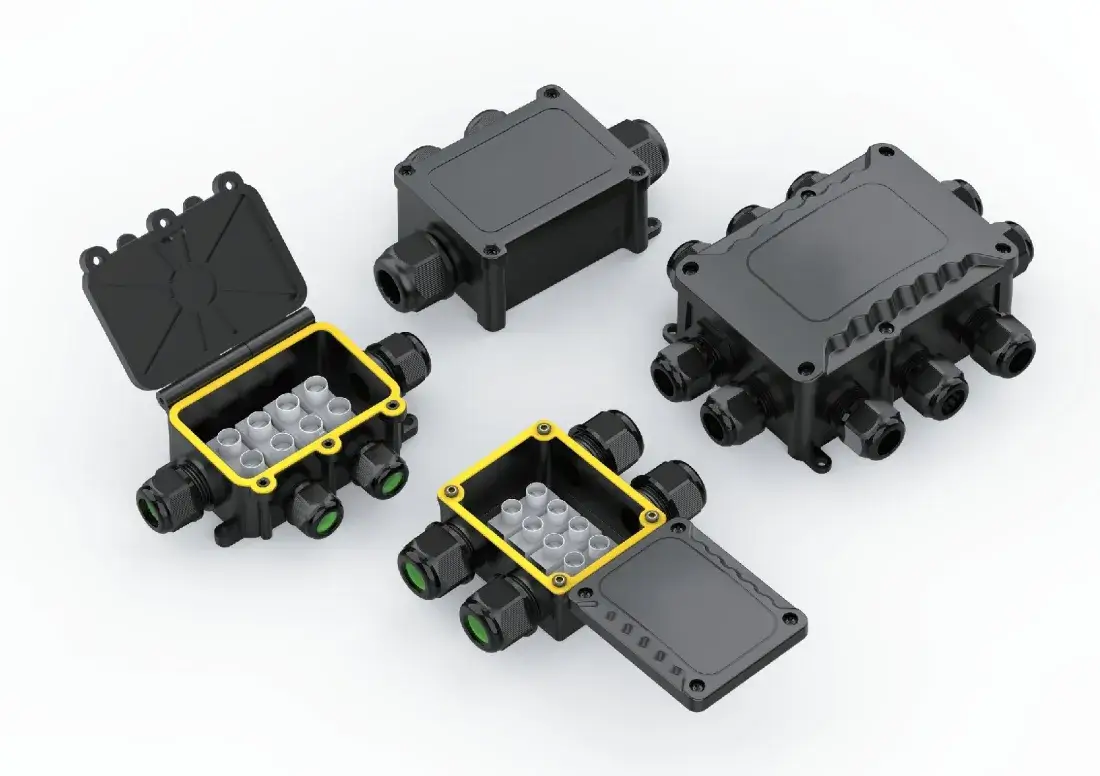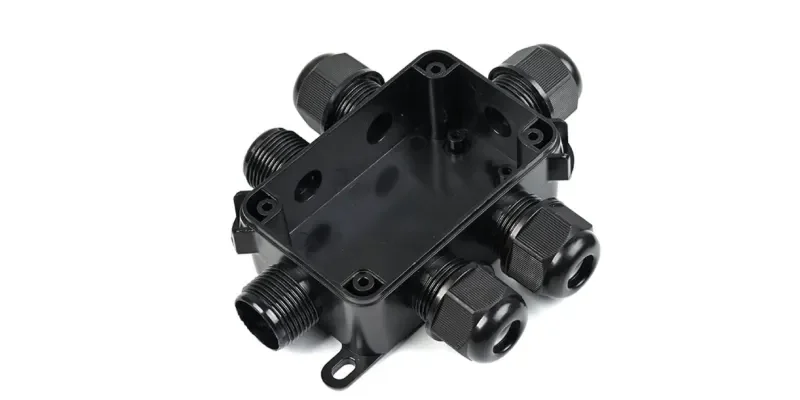An AC junction box is a specialized electrical enclosure designed to safely house and protect connections for alternating current (AC) wiring systems, serving as a crucial component in residential, commercial, and industrial electrical installations.

Purpose and Features
AC junction boxes serve as essential protective enclosures for electrical connections, safeguarding wiring from environmental factors and potential damage. These boxes play a crucial role in preventing short circuits and electrical fires by containing any sparks or heat generated from loose connections. Key features include:
- Protection from physical harm caused by environmental factors, pests, or accidental impacts.
- Shielding of wires and connections from moisture, dust, and temperature fluctuations.
- Provision of a safe space for wiring termination and organization.
- Compliance with electrical safety standards and building codes.
- Accessibility for maintenance and future modifications of electrical systems.
Construction Materials Overview
Junction boxes are constructed from a variety of materials, each offering specific advantages for different applications. Common materials include:
- Metal (steel or aluminum): Provides durability and superior grounding capabilities, ideal for industrial settings.
- PVC or other plastics: Offers lightweight and corrosion-resistant properties, suitable for residential use.
- Fiberglass: Resistant to chemicals and extreme temperatures, often used in harsh environments.
- Weatherproof materials: Heavy-duty plastic or metal with special seals for outdoor installations.
The choice of material depends on factors such as the installation environment, local building codes, and specific electrical requirements. Some specialized junction boxes, like fiber junction boxes, may use unique materials tailored to their specific applications.
Applications in Various Environments
AC junction boxes find diverse applications across residential, commercial, and industrial settings. In homes, they support essential electrical installations such as:
- Ceiling and wall light fixtures.
- LED lighting systems and their transformers.
- Outdoor and landscape lighting, utilizing weatherproof designs.
For commercial and industrial environments, these boxes manage complex wiring networks in office buildings and connect heavy-duty machinery. Their versatility extends to specialized uses like housing fiber optic cable connections in telecommunications. Weatherproof variants are particularly crucial for outdoor installations, featuring robust sealing to protect against moisture and environmental elements. This wide range of applications underscores the junction box’s importance in maintaining safe and efficient electrical systems across various sectors.
Installation Guidelines
Proper installation of AC junction boxes is crucial for electrical safety and code compliance. Key guidelines include:
- Secure mounting to building framing or appropriate surfaces.
- Correct sizing to accommodate the number and gauge of wires.
- Maintaining accessibility for future maintenance and inspections.
- Ensuring proper grounding connections.
- Using appropriate cable clamps or connectors for wire entry.
Installation must adhere to local building codes and National Electrical Code (NEC) standards. For outdoor or specialized applications, additional considerations such as weatherproof sealing or specific positioning may be required to ensure long-term protection and functionality.
AC vs DC Junction Boxes
AC and DC junction boxes serve distinct purposes in electrical systems, particularly in solar power installations. The key differences lie in their functionality and the type of current they handle:
- AC junction boxes combine and distribute alternating current, typically after it has been converted by inverters. They handle lower voltages (120V, 240V, 480V) and are used on the grid side of solar systems.
- DC junction boxes manage direct current from solar panels before it reaches the inverter. They handle higher voltages, often ranging from several hundred to over 1,000 volts.
- Components differ: AC boxes contain circuit breakers and monitoring equipment for AC applications, while DC boxes include specialized fuses and surge protection devices designed for DC current.
- Safety features vary: DC boxes require additional protection against arcing due to the constant nature of direct current, whereas AC boxes benefit from the natural zero-crossing of alternating current for arc extinction.
These differences highlight the importance of using the appropriate junction box for each part of a solar power system to ensure safety and efficiency.
AC Junction Box vs AC Combiner Box
AC junction boxes and AC combiner boxes serve distinct purposes in electrical systems, particularly in solar power installations. While both handle alternating current, their functions and applications differ significantly:
- Purpose: AC junction boxes primarily protect and organize wire connections, while AC combiner boxes consolidate the output of multiple inverters into a single AC feed.
- Complexity: Junction boxes are simpler, focusing on wire connections and protection. Combiner boxes are more complex, incorporating components like circuit breakers, surge protection devices, and monitoring equipment.
- Location: Junction boxes are typically installed on individual solar modules or at connection points. Combiner boxes are placed between inverters and the grid or electrical system.
- Functionality: Junction boxes mainly provide connection points and environmental protection. Combiner boxes actively manage power flow, offering features like overcurrent protection and system monitoring.
The choice between an AC junction box and an AC combiner box depends on the specific requirements of the electrical system, particularly in solar installations where power consolidation and management are crucial.
Related Article
How to Wire A Solar Panel Junction Box
Understanding Junction Boxes: Essential Components for Safe and Efficient Electrical Systems


